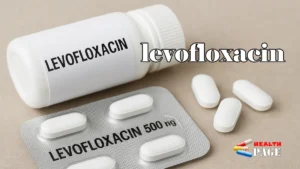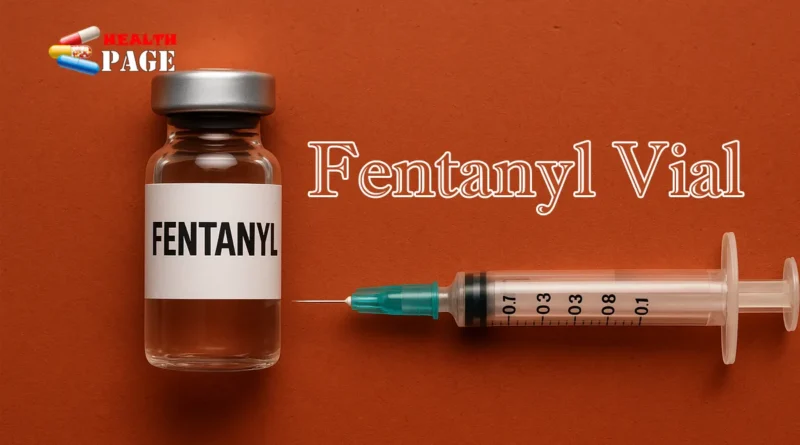6 Alarming Truths Behind the Fentanyl Vial and Its Risks
If you’ve ever come across the term fentanyl vial, you might have felt a chill run down your spine — and with good reason. Fentanyl is not just another medication sitting on a pharmacy shelf; it’s one of the most potent opioids ever created. While it does serve a role in medical care, especially in controlled hospital settings, its growing misuse outside of those walls has turned it into one of the deadliest substances in recent history.
In this article, we’ll uncover 6 alarming truths about the fentanyl vial and its risks. Whether you’ve heard about it from the news, social media, or through someone you know, this guide will break it down in a simple, supportive way. No scare tactics, just facts — so you can better understand what it is, why it’s so dangerous, and how you can protect yourself and your loved ones.
1. A Fentanyl Vial Contains a Drug 50–100 Times Stronger Than Morphine
One of the most shocking facts is the sheer strength of what’s inside a fentanyl vial. To put it into perspective:
- Morphine, often used after surgeries, is already considered a strong opioid.
- Fentanyl, however, is 50 to 100 times more powerful than morphine.
That means even a tiny drop too much can overwhelm the body’s ability to breathe. This potency is the reason medical professionals handle fentanyl with extreme caution, often in very specific doses for cancer patients, surgeries, or severe chronic pain.
But outside of these settings, when fentanyl is sold illegally, the exact dosage becomes a deadly guessing game. A person might think they’re taking a safe amount, but a microgram too much could be fatal.
⚠️ Why it matters: Knowing the extreme potency of a fentanyl vial helps explain why overdose deaths are rising at alarming rates. Unlike other drugs, there is almost zero margin for error.
2. Fentanyl Vials Are Being Misused Beyond Hospitals
Originally, fentanyl was designed for hospital and surgical use only. In these settings, it’s administered through patches, lozenges, or vials — always under professional supervision. But here’s the alarming truth:
- Criminal networks have found ways to illegally distribute fentanyl vials outside of hospitals.
- Counterfeit pills are often laced with fentanyl, sold as “Oxy,” “Percocet,” or even Xanax.
- Some street drugs are mixed with powdered fentanyl because it’s cheap to produce and incredibly addictive.
This has made the drug supply more dangerous than ever. People often don’t know they’re consuming fentanyl until it’s too late.
📌 Example: Someone might believe they’re taking a prescription painkiller, but in reality, they’re ingesting a pill pressed with fentanyl powder from a vial. The result? An immediate risk of overdose.
3. A Fentanyl Vial Can Be Deadly to Touch or Inhale Accidentally
Another alarming truth is that fentanyl is not just dangerous when ingested. Because it’s such a fine powder, exposure can happen by accident.
- Accidental inhalation: Just a small amount of powder from an opened vial can become airborne.
- Skin absorption: While it’s less likely through casual contact, repeated or large exposures to the skin can pose a risk, especially for emergency responders.
This is why law enforcement and paramedics wear gloves, masks, and sometimes even hazmat suits when handling fentanyl vials during raids or overdose situations.
🔑 Key takeaway: Unlike many other substances, fentanyl’s danger isn’t limited to users — it can also pose risks to anyone who accidentally comes in contact with it.
4. Overdose Symptoms Appear in Minutes
With fentanyl, time is not on your side. Because it’s so potent, overdose symptoms can appear within just a few minutes.
Here’s what to look for if someone has been exposed to a fentanyl vial:
- Slow or stopped breathing
- Pinpoint (tiny) pupils
- Loss of consciousness
- Blue or gray lips and nails
- Limp body or inability to wake up
In these cases, the only effective response is immediate administration of naloxone (Narcan) — a medication that can reverse the effects of opioids temporarily.
👉 Tip: If you or someone you love is at risk of accidental fentanyl exposure, carrying naloxone can be lifesaving. In many states and countries, you can get it without a prescription.
5. The Fentanyl Vial Is Fueling a Global Overdose Crisis
The misuse of fentanyl has escalated into a worldwide health emergency. According to recent data:
| Year | Overdose Deaths Involving Fentanyl (U.S.) | % Increase From Previous Year |
|---|---|---|
| 2015 | 9,500 | — |
| 2019 | 36,000 | +278% |
| 2022 | 70,000+ | +94% |
(Data adapted from CDC reports)
This surge is largely driven by the spread of illegally manufactured fentanyl vials and powders. What makes it even more heartbreaking is that many victims never intended to take fentanyl at all — they thought they were using something else.
🌍 Beyond the U.S.: Other countries, including Canada and the UK, are also seeing rising deaths connected to fentanyl. This highlights how far-reaching the crisis has become.
6. Education and Awareness Can Save Lives
Here’s the hopeful truth: knowledge about the dangers of a fentanyl vial is one of the strongest defenses we have. By spreading awareness, communities can reduce risk and prevent unnecessary deaths.
What you can do:
- Learn the signs of opioid overdose.
- Talk openly with friends and family about fentanyl risks.
- Avoid pills from unreliable sources — if it’s not from a pharmacy, assume it could contain fentanyl.
- Support harm reduction efforts in your community, like naloxone distribution programs.
💡 Remember: The goal isn’t to shame or judge people who use drugs. It’s to empower them (and those around them) with the knowledge and tools they need to stay safe.
Final Thoughts
The fentanyl vial is not just another medical supply; it’s a symbol of one of the biggest public health challenges of our time. Its extreme potency, misuse outside hospitals, and role in skyrocketing overdose deaths make it a substance that demands awareness and caution.
By understanding the 6 alarming truths we’ve shared today, you’re already taking a powerful step toward protecting yourself and others. Whether it’s learning the signs of overdose, keeping naloxone nearby, or spreading awareness in your community, every action counts.
Stay safe, stay informed, and remember: even in the middle of this crisis, knowledge and compassion can save lives.


